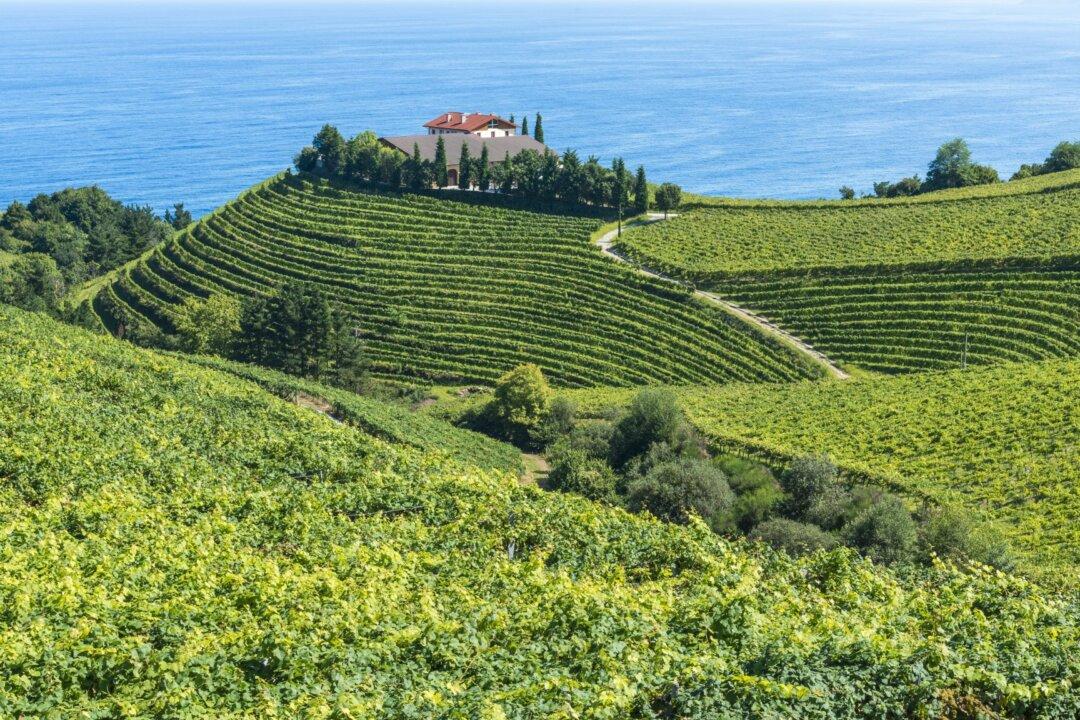I saw at a window table at Asador Cannon, a hilltop restaurant overlooking the Bay of Biscay in Basque Country, the autonomous region in the northeastern corner of Spain. Along with the sweeping view of the sea, I enjoyed that perfect trio of exceptional company, food, and drink. I chatted with my guide over a plate of grilled octopus and the seafood special of the day—fresh monkfish—as I sipped my way to the bottom of a bottle of a wine style I’d never heard of: txakoli.
Pronounced “CHOCK-oh-lee” (the Basque “tx” is like the “ch” in church), but also called txakolina, this dry white wine with high acidity and light effervescence is served cold and young—never more than a year old. The alcohol level ranges from 9–11.5 percent, making it light for a good summer drink.





